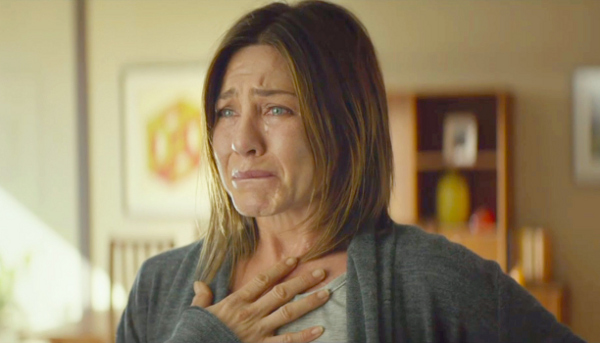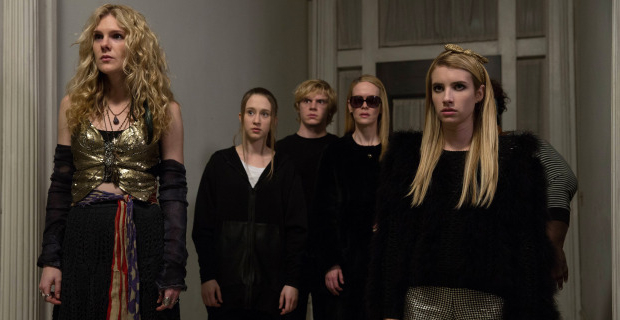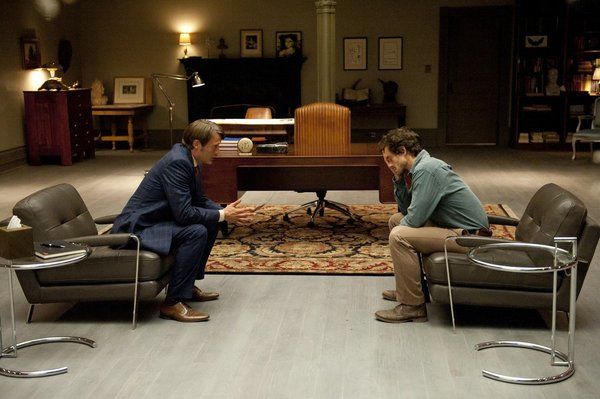 Cake
Cake
Written by Patrick Tobin
Directed by Daniel Barnz
USA, 2014
In Cake, it takes about fifteen minutes for director Daniel Barnz to establish the ground rules for this familiar portrait of grief and addiction, followed up by another ninety minutes or so of dramatic clumsiness and eye-rolling clichés. Whether it is drugs, sex, or booze, each brings a routine numbing quality to the table for Claire Bennett (Aniston), a seemingly darkly comedic and scathing woman who we first meet in a support group for chronic physical pain. The group is discussing the recent suicide of one of their members, while Claire draws appalling gasps due to her candid sarcasm on the matter. Sporting facial and body scars as well as weedy hair, Aniston’s return to drama screams “I’m ready for recognition!” but Cake does a horrible job of providing Aniston with much to work with.
Claire has driven most people away from her, but at least maintains the semblance of a companion in her Mexican maid, Silvana (Adrianna Barazza), whom she generally runs hot and cold with. Claire’s husband Jason (Chris Messina) is also distanced from her as well as her physical therapist (Mamie Gummer) who she’s been fired by. Claire eventually becomes fascinated with the suicide of her group partner, Nina (a wasted Anna Kendrick), whom she has hallucinatory visions of where Kendrick explains the title of the film and reminds Claire of how big of a bitch she is. Claire decides to tracks down Nina’s widower (Sam Worthington), who’s having a difficult time raising his son amid his own grief. It’s a well-intentioned relationship that looks good on paper, but one that fails to capture the dynamic between two wounded souls looking to fill certain tragic voids in their lives — and feels only inserted to give Claire more things to do when she’s not stuck in bed, popping pills, or reclining back in her car seat due to her injured back.
The brunt of Cake is about Nina’s relationship with Silvana, the token immigrant housekeeper who drives her all around town and even into Tijuana to score some painkillers, an act that would obviously jeopardize Silvana’s status in America. Like almost everything in the film, Barraza’s character is underexplored. She obviously stands in stark contrast to the privileged Claire, but their dynamic never deepens or catches us by surprise. We get a brief scene of Silvana returning home one night where she’s chided by her daughter for continuing to work for Claire, a throwaway moment that further informs us of how little people think of Claire and how little the screenplay cares about adding an extra dimension to its supporting characters.
All of this sort of leaves Aniston and her performance in a state of limbo. She’s clearly not the film’s main problem even though she doesn’t command the screen through all the banal and uninspired patches. Aniston’s portrayal of Claire doesn’t necessarily feel one-dimensional, but increasingly stiff, steely, and unable to break free from the confines of a script (Patrick Tobin) that is neither funny nor emotionally rich. A perplexing lack of empathy is undoubtedly Cake’s largest offense, with scene after scene of self-serious schematics and bludgeoning symbolism. William H. Macy shows up in one brief scene to add vague clarity to Claire’s past tragedy, which of course has been hidden from us for far too long by this point. This constant mishandling of encounters gets at how clumsy the film is in offering up anything true or specific regarding its characters and their interactions.
What it all eventually leads to is a phony sense self-discovery that feels telegraphed from a mile away. Barnz’s direction flattens any emotion or pathos as the entirety of Cake is a rather useless waste of time. There’s probably a good movie in there somewhere about a wealthy white woman dealing with insurmountable trauma, but Cake is a sour and careless character study that does everything in its power to take the least interesting and least affecting route whenever possible.
— Ty Landis






